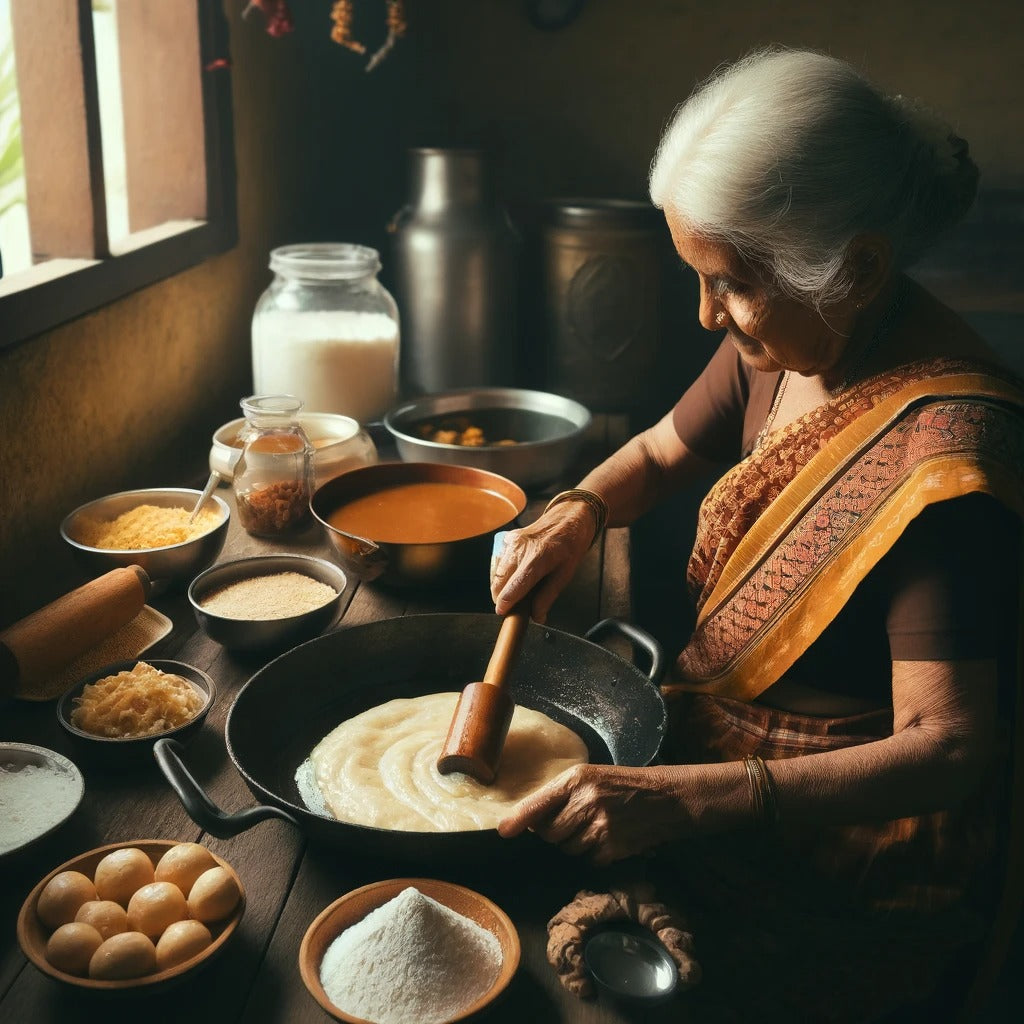
Exploring the Sweet Tradition of Athirasam: India’s Ancient Dessert
Share
In the vast panorama of Indian sweets, a few have a storied history as rich and as sweet as Athirasam. This traditional dessert, which traces its origins back to at least 1000 years, holds a special place in the hearts of many, particularly in the southern regions of India. As Diwali approaches, kitchens begin to buzz with the preparations of this beloved sweet, a testament to its enduring presence in Indian festivities.
The Historical Roots of Athirasam
Athirasam, also known as Adhirasam in some parts of South India, is more than just a dessert; it is a slice of culinary history. References to this sweet can be found in ancient scriptures and texts, suggesting that it has been part of Hindu festivals and rituals for centuries. The making of Athirasam was traditionally linked to important occasions, serving as a sacred offering in temples and a festive delicacy at home.
Ingredients and Preparation
The beauty of Athirasam lies in its simplicity. The sweet is made from just a handful of ingredients, primarily rice flour and jaggery. The rice is soaked overnight, finely ground, and then mixed with jaggery syrup spiced with cardamom. This dough is then rested, sometimes for days, allowing the flavors to meld.
The critical aspect of Athirasam preparation is the consistency of the jaggery syrup, which should be perfect to achieve the desired texture. The dough is then shaped into small, flat discs and deep-fried in ghee or oil until they turn a dark, caramel color. The skill lies in frying the Athirasam to a point where it is neither too crisp nor too soft but has a slightly chewy texture that melts in the mouth.
Cultural Significance
Athirasam is more than a culinary treat; it's a cultural symbol. It is prominently featured during Diwali and other Hindu festivals such as Ganesh Chaturthi and Navratri. In Tamil Nadu, it is a customary bridal sweet, presented during weddings as a part of the festivities and as a gesture of good luck for the newlyweds.
Each region has its own twist on the basic recipe, which might include variations in the type of jaggery used, the addition of coconut or sesame seeds, or adjustments in the spice blend. Despite these variations, the essence of Athirasam as a celebratory sweet remains consistent across boundaries.
Health Aspects
In today’s health-conscious world, Athirasam, like many traditional sweets, is enjoyed in moderation. Made from unrefined jaggery and rice flour, it offers more than just empty calories. Jaggery is a good source of iron and can aid digestion, while rice flour is gluten-free, making it a suitable option for those with gluten intolerance.
The Art of Making Athirasam
Making Athirasam is considered an art, often passed down through generations within families. It requires practice and patience, as the process is as much about timing and technique as it is about the ingredients. The challenge of getting Athirasam right—achieving the perfect texture and flavor balance—makes it all the more special for those who undertake the task.

Conclusion
Athirasam continues to be a cherished treat, its recipe guarded and passed down with pride. Each bite of this sweet is a taste of history, a reminder of the rich cultural tapestry of India and its age-old traditions of sweet making. As modern culinary trends evolve, the timeless appeal of Athirasam remains unchanged, making it a true classic of Indian cuisine.
For those looking to experience the joy of making and tasting Athirasam, there is no better time than now to delve into this sweet endeavor. Whether enjoyed amid the sparkle of Diwali lamps or as a part of wedding feasts, Athirasam promises a delightful indulgence into the world of traditional Indian desserts.
